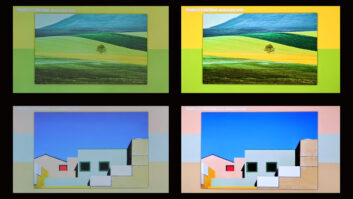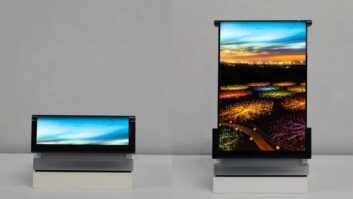Huntington Beach, Calif. – Sharp Systems of America is using its newest notebook computer, the Actius RD3D, as the launch platform for its first 3D-capable LCD that can render a 3D image without using special goggles.
The Actius RD3D is equipped with a 15-inch LCD that uses a Sharp developed technology to render 3D images on the screen itself. It is now available directly through Sharp with a $3,299 street price. The consumers most likely to take advantage of the 3D technology are the high-end gamers that play the 1,000 3D game titles now on the market, said Ian Matthew, Sharp’s 3D development manager. Because the gaming aspect is so important, Sharp teamed up with graphic card maker Nvidia to develop the LCD.
‘The Nvidia relationship comes into play here,’ Matthew said, ‘Nvidia has supported 3D gaming for quite awhile, but you needed special glasses for them.’
The RD3D is essentially a higher-end notebook that uses a Nvidia GeForce4 440 Go with 64MB Video RAM. Other features include a 2.8MHz Intel Desktop Pentium® 4, 2.8 GHz, a 60GB hard drive, 512MB of RAM and a DVD-RW/DVD-RAM drive.
Matthew believes the price will make the Actius RD3D a more popular buy for various vertical markets before it becomes a hot seller at retail. Sharp anticipates that the price should fall relatively quickly with it hitting the $2,000 price range sometime next year, said Terry Hanly, the company’s product marketing manager. At this point is should become available at national retailers, she said.
The screen is capable of running in conventional 2D mode when used with non-3D applications, and the technology could be ported over to stand alone LCD monitors. Sharp declined to take this route with its initial launch, Matthew said, because it wanted to give customers a complete, working 3D package. The Actius RD3D’s screen and graphics card were specifically designed to work together, something that could not be guaranteed if another computer was used, he said.
To create the 3D effect the display utilizes two LCD. The outer panel operates in a conventional fashion, but the back panel turns off every other pixel, which creates a double image to the user’s eyes thus creating the 3D affect. For the best result the viewer needs to be directly ahead and about 21-inches away from the screen, Matthew said.
The notebook is bundled with several 3D titles and software that will convert 2D digital images to 3D.













